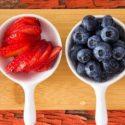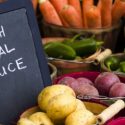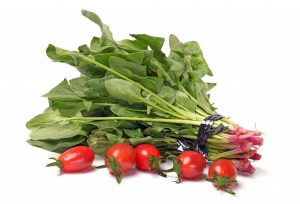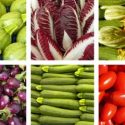Energy drainers are those things that we are tolerating, ignoring, or putting up with that are draining us of our precious energy. Energy Drainers can be mental or physical clutter and when they are handled, you can reclaim the energy that is being used up by them.
There are four types of energy drainers that are particularly detrimental to us: Stuck on It, I Wish, Worrying, and What Ifs. All of these are double whammies in that they not only drain us of our energy, but they produce no positive results.
Stuck on It
This is when we use our energy to focus on things that can’t be changed. You see, problems deplete our energy when we continue to focus and talk about them long after we’ve done everything we can with them. For a lot of us, it is hard to let go of something without reviewing why it happened. We can get stuck on questions such as: What could have been done differently? How could I have prevented it? How will others judge me?
Here are a few more examples of questions and thoughts that help us stay stuck:
Why did he/she do this?
Why did this happen?
I still can’t believe the relationship is over.
I shouldn’t have done that.
If you are thinking these thoughts over and over and over again, you are Stuck on It.
I Wish
When we are Stuck on It, we can also get caught up playing I wish. The I Wish game is when we repeatedly think things like,
I wish that hadn’t happened.
If only I had…
If I just could have…then it wouldn’t have happened.
Playing the I Wish game is an indication that you are unable or unwilling to accept the outcome of a situation, learn from it, and move on.
Worrying
Let me first make a distinction between productive planning and worrying. There is no denying that we need to have goals and plan for our immediate and long term future. I am talking about unproductive worrying here that acts as an energy drainer and inhibits our ability to fully engage in our present. Either we can’t act because we are too worried about our chosen course of action, or when we finally do act, we worry so much about our choice that we become Stuck on It. Clearly, an unproductive cycle that leads us nowhere fast.
What Ifs
Again, a distinction needs to be made: It is always a good idea to look at the possible outcomes of an action that we are considering. However, when we continue to ask “What If” over and over we inhibit our ability to see the picture clearly and move forward. Here are a few examples of thoughts that might indicate you are playing the What If game:
What if people reject me?
What if I try and fail?
What if I look stupid?
What if I don’t know how to do it?
Other types of Energy Drainers:
Procrastinated tasks (these are the things that are hanging over your head)
Exercise & Losing Weight
Quitting Smoking
Cleaning
Work projects
It actually takes more energy to procrastinate something that it does to actually do it!
Emotions tied to the past
Guilt
Shame
People: these are the people that leave you feeling exhausted after spending time together. Examples include:
Mr/Mrs. MeMeMe
The one-upper
The downer.
All of these Energy Drainers can inhibit our ability to move forward toward healthier life goals. We exhaust ourselves when we continue to expend energy on something that is finished. Wishing about the past and worrying about the future guarantees that you will miss out on the present. Imagine all the things you could do if you freed up some of the energy that is currently being misdirected. You already have all the energy you need within you. Reclaim it and unleash your true potential.
What is draining you of your energy? Are you stuck on something? Are you a worrier? A procrastinator? I challenge you to take a look at one thing in your life that is draining you of energy. No matter how big or small the energy drainer, you will be amazed at how freeing it will feel to let go of it.
How?
Identify the Energy Drainer (e.g., worrying about something)
Ask yourself, “Is this productive or not?” “How will I benefit from worrying about this?”
If no productive results are likely to come…LET IT GO! Make a conscious effort to stop the energy draining thought.
Need help? Have questions for Sharon? Call 540-349-2791 or email: Sharon@OTACFitness.com.
Ahh….spring is in the air. And with it comes the blooming flowers, more sunshine to enjoy in the afternoons, the breakout of capris and tees from storage, and of course, spring training for upcoming races!!
To add a little spice to my workouts, I signed up for a Duathlon (that would be a run, bike, run combo–no tri doggy paddling for this girl). Now in the past, when I’ve signed up for any kind of race, I immediately drew out a training schedule for my workouts.
What I ate was usually a secondary thought (Ok, sometimes it was a tertiary thought…)
Oh, how times have changed. My focus now is what to eat before and after my training sessions, as well as having an organized exercise plan. Having a well-balanced eating plan coinciding with your exercise routine can enhance your performance by providing your muscles with fuel and repairing your tissues so you can get stronger and be ready for your next workout. Keeping a food and activity journal helps you stick to your goals by tracking your calorie intake and output, discovering those pesky eating triggers, wiping out bad habits, and learning how to motivate your body by eating properly and staying active.
Now, I don’t plan on bringing home a trophy (although my husband says he’ll clear off a space on the mantle for one). My race goal is pretty simple: Finishing strong thanks to my balanced nutrition and training plan.
Did I mention finishing??!
Here are fundamental nutrition tips for those of you that are the mere mortal, non-elite athletes training to finish strong in a race:
PRE-WORKOUT GRUB
Filling up your body’s energy tank prior to a workout can provide you with more energy during your workout. The challenge is knowing how much food you can consume before your workout. Everyone is unique and will burn fuel at a different rate: Some can eat a full meal as little as an hour before a workout, while others have to wait much longer. Ensure that what you eat is easily digestible. You should experiment with the timing to suit your individual needs and keep track of it in your food/activity log.
If you’re an early riser, you want to make sure that you have consumed something that will get you through your training. Remember that your body has been without food for several hours during the night, so you cannot expect to get the best out of your training if you do not fuel your body properly. Eat foods that sit well in your stomach in the morning. This could be a yogurt smoothie, banana, oatmeal with whey protein mixed in, or a slice of whole wheat toast with peanut butter.
SKIPPING MEALS IS A NO-NO
You might think training for a race is a great time to cut back on calories so you can lose some weight before the big race. WRONG! When you increase the intensity and the duration of your workouts, you need to nourish your body adequately. This means putting an eating plan in place that will ensure you are meeting your body’s increased nutrient needs. Skipping a meal will unfortunately set you up for an overindulging disaster later on in the day.
BECOMING A VACUUM AFTER WORKOUTS
You just completed an amazing workout and you feel alive and energetic, albeit a little tired as well. You go to eat something and think, “Hmm, I must have burned at least 2000 calories during my workout! I’ve earned that second helping AND that triple thick, extra large chocolate shake.” Don’t devour everything that falls helplessly in your path after a long training session. You can still eat your favorite foods as long as portions are kept in check and a balanced menu is in place.
EAT UP RIGHT AFTER YOUR WORKOUTS
After an intense workout, your body is ready to soak up nutrients used to refill and repair your body. Protein assists with muscle repair and growth while muscles rely on carbs for fuel. Make sure you are eating the right combination of high-quality protein and complex carbohydrates within 30 minutes to one hour after your workouts in order to speed post-workout recovery. Studies show that the balance is a 4 to 1 ratio of carbs to protein.
When you train in the evening, you might not be ready to eat dinner until very late. Later that big meal will still be churning away when you go nighty-night which can influence your sleep and increase your storage of fat. Eat your main meal at lunch and consume a small post-training meal. A few ideas are eggs on toast, homemade bean and veggie soup with bread, or a small protein & carb shake. Find what works best for you!
QUENCH THAT THIRST
Hydration is a key element of training for any endurance event. Proper hydration enhances performance, helps cool the body, delays fatigue, and prevents injuries associated with dehydration and sweat loss. Make sure you are satisfying your basic fluid requirements as well as increased fluid needs when training. Hydrate before, during, and after exercise.
SUM UP
What you eat plays a huge role in your training. Without putting an eating plan into place you will undermine all the hard work you’ve been establishing. You want to make sure that you are nourishing yourself correctly by eating a wide variety from each food group to ensure you get the nutrients your body needs to recover and grow stronger after each training session. Tracking your food (don’t forget water too!) and activity will keep your training and nutrition goals in check. Having a solid nutrition plan will get you to that finish line.
Finish strong….and maybe bring home that trophy!
What is Your Energy Balance Equation?
(As seen in Warrenton Lifestyle Magazine)
The first step in this four-part series to a Lean Body was to makeover our kitchens. Hopefully, your kitchen is now a cooking-friendly environment, jam-packed with nutrient dense foods, and one of the “happiest” rooms in your house!
Step 2 to a Lean Body is developing an understanding of your energy balance and finding the balance that works for you.
What is energy balance? Very simply stated, it is the difference between the amount of daily calories you take in (energy input) and your daily energy output (exercise, normal daily activities, the energy consumed to run your bodily functions). The difference between these two numbers results in a negative balance (weight loss), a positive balance (weight gain) or an even balance (maintaining current weight).
If only it were that simple….
Researchers have developed numerous calculations to help determine how best to formulate a weight loss plan. Unfortunately, there are many equations, with many variables; it can be difficult and frustrating to decide which method will work best to achieve energy balance and meet your weight-loss goals.
The Exercise Equation:
Experts recommend that an individual burn 1000 calories weekly to improve health, and 2000 calories weekly to lose weight and improve fitness levels. For many whose weight loss goal includes an exercise program to meet that goal, in order to burn enough calories to lose weight they will need to exercise harder, longer and/or more frequently to yield the 2000 calorie-burn. Research in this area suggests that requiring beginning exercisers to sustain longer/harder or more frequent workouts does not aid in their compliance for long term activity and weight loss. They simply don’t stick with it. Burning 1000 calories may be a more reasonable expectation of beginners, and will likely result in some added health benefits, but the 1000 calorie-burn is unlikely to result in weight loss. Since most people want to lose weight, the exercise equation alone will not work for most people.
The Metabolism Equation:
Another important factor in determining one’s energy balance is calculating the Resting Metabolic Rate (RMR), a key component in one’s ability to burn calories efficiently. RMR is based on the amount of muscle tissue in our bodies. Muscle burns calories more efficiently than fat, so it is important that we
perform exercises that promote an increase in lean tissue. While the response time varies from person to person, research indicates that it can take between 6 and 10 weeks of regular resistance training to increase muscle enough to have a real impact on RMR. Research has also shown that the amount of energy (calories) we take in daily is vitally important to the growth of lean tissue. Unfortunately, those who seek to lose weight often go on a very low calorie diet, which conflicts with the body’s need for calories to build muscle. The body recognizes when it is not getting enough energy, and on a restricted calorie diet will store fat rather than building lean tissue. In the long run, weight training on a restricted calorie diet interferes with building muscle, and thus interferes with increasing the RMR that helps maintain a healthy weight.
The Nutrition Equation:
We must also consider one other factor associated with exercise and weight loss – the nutrition equation! As you can see from above, nutrition plays a key role in both the exercise equation and the metabolism equation, it may be the single most important equation but listen to this:
Research has proven how even modest intensity exercise can boost caloric intake by up to 383 calories per day! Whether this increase is due to a need to satisfy hunger, restore energy or fulfilling the need that we feel like we should reward ourselves for working out, you can see how this can have a negative impact on the effort you are putting into your weight loss goals. In order to meet our weight loss goals, you have to keep the energy balance in check. Slow and steady wins the race on this win through adequate nutrition and weight lifting.
The YOU-equation:
The equations described above have the potential to be helpful; however, there simply is no universal one-size–fits-all formula that meets everyone’s needs. We are physically unique and face a host of unique challenges in our quest to achieve a lean body. Even with all the variables to consider, I believe there is a simple two-step approach that allows us to achieve our unique energy balance. I call it the You-equation: it’s simple, it’s specific to you, and you can make it happen.
Most of us follow a pretty set routine from day to day, and creating the You-equation starts with writing down your daily schedule. (it is not necessary to do this every day, simply get a good idea overall from which can take action!)It may look something like this:
6:00am Rise – Shower and get ready for work and prep family for the day
6:45 Breakfast
7:15 Commute to work
8:15 Arrive at work
8:30-12:00 Seated at my work station
4:30-5:30 Commute Home
5:30 Take Child to soccer practice – sit and watch
6:30pm Pick up Dinner
7:00pm Arrive home eat dinner
7:15pm-8:15pm Laundry, Kitchen Clean up, Misc Chores
8:15pm-9:15pm Check emails while watching TV, pay bills etc.
9:15-10:15pm Complete household chores
10:15pm Get Ready for Bed
11:00pm -6:00am Sleep
In the above example, this person is awake for 17 hours, seated for an estimated 12 hours, sleeping for 7 hours, and moving around a maximum of 5 hours.
Using this example, the goal would be to alter the energy balance by increasing the energy output, which can be done simply by moving more throughout the day. Step one to creating your You-equation is to look over your daily schedule and identify opportunities to increase movement; as little as 60 minutes spread across your day has the potential to significantly improve your energy balance.
Step two in creating your You-equation involves writing down what you eat. Most of us follow a pretty routine schedule for what and when we eat; write it down in as much detail as possible. Again, keep it simple, you may not need to do this everyday, get a basic idea and than attack it with enthusiasm!
Identify those foods that do not supply you with valuable nutrition and eliminate (or at least reduce) them from your daily meal plan. Doing so will reduce your energy input, and create a healthier energy balance.
Step 2 to a Lean Body is finding the right energy balance. Your unique You-equation, formulated from the specifics of your daily schedule and nutrition, will help you find your energy balance, and lead to a healthier, happier, leaner you. Remember, be consistent, be honest and commit to small improvements each and every day!
Resources:
Precision Nutrition
Idea Fitness Journal March 2012
Pudding Snack Pack: Delicious for Kids and Adults.
Ingredients:
1 container (5.3 ounces) of 0% or 2% Plain Fage Greek Yogurt
1/2 Scoop Vanilla Protein Powder
1/4 Banana chopped (about 3 inches )
12 peanuts crushed (you could also use almonds or walnuts, if you prefer.)
Mix it all together – it tastes like vanilla pudding with some extra peanutty-banana textures and flavors! It also contains calcium and a couple grams of fiber.
It’s great post workout or for a snack anytime of day.
Total Calories: 260
Total Protein: 30 grams
Total Carbs: 29
Total Fat: 4.5 grams
If using 2% yogurt instead of 0% – add 50 calories and 4 more grams of fat.
If you are not a nut person, you can do without but you definitely need the 2% yogurt to give you some healthy fat in the snack!
As seen in the August 2012 issue of Warrenton Lifestyle Magazine…
It’s natural to set goals for one’s self, to aspire to make positive changes that will enhance one’s health and well-being. Whether the goals are lofty or simple, they are the “outcome” of a process. If you think about it, it is a process that involves developing good habits, which over the years pave the way for you to achieve your personal goals. These good habits empower you to be successful, productive, and confident. And amazingly, most of the time you are performing these habits on autopilot. I call it “habitual autopilot,” and it’s a very good thing. Let me explain….
Think back to when you first started living independently. It took time and effort to learn how to manage life outside the comforts of home with mom and dad. You had to work hard to develop the good habits needed to be successful living on your own. But as time went on, the behaviors that felt like hard work became habits, and you eventually incorporated them into your daily routine.
When you stop and think about it, getting ready for your busy day is quite a process. Amazingly, most of the time you are not thinking about all the planning and preparing it takes to make your day run smoothly. It means you’ve incorporated a whole host helpful habits that come naturally, and help to ensure your day is a success.
As you’ve added new responsibilities and activities to your life, each has required incorporating more new habits. Developing new and helpful habits is never easy in the beginning. No doubt, you’ve made mistakes, and made adjustments, but eventually new behaviors have become good habits. Slowly but surely, what once felt new and awkward, is now done on habitual autopilot. You just do it, and you do it really well!
Do you ever wonder why it is we sometimes can make huge changes to meet our health and fitness goals, and other times we get stuck? Ever wonder why sometimes we get bogged down in the process struggling to establish the good habits needed to achieve our goals? And we all struggle to break from the not-so-productive habits that interfere with meeting our health and fitness goals. So how do we make the shift to good habits, and to the habitual autopilot that helps us meet our goals?
First things first…identify your motivation. Make sure you have a compelling reason to achieve your goal. Make it personal for YOU, and strong enough to support you through the process. Once you identify your motivation for change, the second part of the process is two simple steps toward achieving habitual autopilot:
The new habit has to be easy enough to embrace, and
The habit has to advance your goal/outcome
Here are a couple of specific suggestions:
Tweak your environment-this is about making the right behaviors easier and the wrong behaviors a little bit harder.
Example: Stock your kitchen with foods that are aligned with your goal. Remember your kitchen makeover in Step One to a Lean Body?
Preload your decisions-make your decisions in advance and prep for success.
Example: Instead of committing to “going to they gym” four times per week, it might be easier to preload this outcome by packing your gym clothes in your car the night before (you are setting yourself up for success) or offering to pick up a co-worker or friend on the way (now you have not only made a commitment to yourself but to someone else as well!)
Be prepared to fail. Just as mentioned above, habits are developed over time and tweaked along the way through our failures. It is critical to understand that failure is a natural part of the change process. Change is rarely a straight line from beginning to end. When you embark on a new process, you start out with great hope and optimism. As you start to implement your process, your plan will likely get detoured a bit and you will likely feel discouraged. Remember it can be hard to develop new habits.
Stay the course, build momentum, believe in yourself and build the confidence you need to leave behind the old and not-so-good habits.
Before you know it, you will have built many new good habits as you work toward your health and fitness goals. And you’ll find yourself doing them on habitual autopilot!
Reference: Chip Heath and Dan Heath: Switch: How to Change Things When Change Is Hard (2010)
As seen in the November 2012 issue of Warrenton Lifestyle Magazine…
Fall is here, with delightfully crisp air and gorgeous scenery. This year, inspire your whole family to get outside and get moving with our Fall Family Activity Challenge. How many activities can you complete?
The leaves are changing. There’s a chill in the air. Soon, we’ll be raking leaves and carving pumpkins. Yes, fall is officially here. And, with it comes some of our region’s best weather, most stunning scenery and tastiest seasonal treats. Why not get the whole family outside and having fun with our Fall Family Activity Challenge?
Here’s how it works. Between now and Thanksgiving, challenge your family to complete at least half of the 22 activities below. Once you’ve hit your goal, treat yourself to something fun that the whole family will enjoy.
At home:
Leaf maze: Rake your leaves into a crazy pattern to make a maze in your own backyard. Run or bike through the maze. Can everyone figure it out?
Leaf pile: Once you’ve solved your maze, rake the leaves into a big pile. Go ahead. Jump in those leaves. Have a blast before cleaning them up for the year.
Fall cleaning: Pick a single room in the house for a fall makeover. Work together as a family to get it clean and organized. You may want to focus on a room that’ll see a lot of use in the winter, like your basement or living room.
Football or soccer: Invite over some family and friends, and enjoy a fun game of flag football or soccer in your backyard.
Bonfire: After the game, gather the group together for an evening bonfire. Roast some marshmallows and tell ghost stories. After all, with Halloween just around the corner, ‘tis the season for spooky stories.
Wash the cars: Give your cars a little TLC before winter arrives, and it’s too cold for hoses and water fun. Pick a sunny day and get the whole family involved.
Decorate for fall: When is the last time you made a scarecrow or carved a pumpkin? Here’s your chance. Collect your supplies from a local farm or store, and spend the day creating fall decorations with the whole family.
On the road:
Hit the trail: Autumn in Virginia is one of the nicest seasons for a hike or stroll through the woods.
Grab the bike: Want to move a bit faster? Hop on the bike for a ride around town or through the country. If you don’t own a bike, you can usually rent one from your local bike store.
Take a hayride: Farms are packed with fun activities for the fall. Visit a local pumpkin patch to pick your own Jack’o’lantern. Take a stroll through a corn maze. Visit a haunted house.
Pick a peck o’ apples: Autumn means apples. Visit an orchard and spend the day picking the tastiest fruits from the trees.
Turkey Trot: Register the whole family to participate in a local running or walking event, like the Turkey Trot.
Hit the links: Golf season is almost over. Head out for one last round on your favorite course, or hit a bucket of balls at the local driving range. Take along the kids too!
Rainy day fun: Keep active even when the sun isn’t shining. Take the whole family out for a day at the local health club, pool, bowling alley or climbing wall.
Plan ahead: Start planning now for a fun family activity for Thanksgiving day or weekend. After all that turkey, you’ll be happy to get out and get moving!
Volunteer: Pick a local cause — a food drive, for example — and get the whole family involved with volunteering.
Don’t forget the pets: Take along the dog when you hit the trails. Or, maybe trying teaching them a new trick.
In the kitchen:
Roast pumpkin seeds: Save the seeds from your Jack’o’lantern. Toss them with a bit of olive oil and salt, and roast them in the oven for an easy and tasty treat.
Get creative: Fall is wealthy with delicious seasonal ingredients. Try a new recipe featuring apples, pumpkins, winter squash or cranberries. Enjoy the harvest!
Visit the farmers’ market: Get to know your local farmers. Ask them about their produce and meats, and try a few things you’ve never tried before.
Eat some eggs: Buy a dozen local, pastured eggs at the farmers’ market. Ask your farmer how they raise their chickens, and how their eggs are different from the ones at the grocery store. Then, take them home and cook them up. Can you taste the difference?
Enjoy a local, family dinner: Pick one night a week for a family dinner featuring some of the local fare you found at the farmers’ market. Be adventurous with your ingredients. You may find a new family favorite!
We’ve offered you 22 activities here, but there are countless ways to get outside, get active and have fun during the autumn months. Try some of our suggestions, or create some of your own. Whatever you do, focus on sharing healthy foods and fun activities with your family, and everyone will feel better, inside and out!
As seen in the March issue of Warrenton Lifestyle Magazine…
Let’s be honest; fast food, fat-free, low fat, highly processed, bagged and boxed foods are getting a lot of bad press these days and for good reason. They are made up of chemicals for flavoring and for a long shelf life, which has been proven to be unhealthy. Additionally, research is telling us these foods may be a large contributor to our obesity epidemic. Due to their highly processed nature, their overall nutrient value is very low. We eat these foods and feel satisfied only for a short time because, well, honestly, they are not supplying our bodies with the nutrients it needs so we feel the need to eat more…and more! It is not necessarily hunger we are feeling but a nutrient deficiency instead!
Convenience is really important in all of our lives and I believe, we can reduce the types of foods mentioned above and replace them with foods that are nutrient dense with no added stress. It’s time to get back to the basics of eating all food groups and loving what the earth and nature provide!
Trust me and trust yourself. Make a few changes and you will not believe your energy, your clarity, your good mood, and oh, yeah—you might lose a few unwanted pounds as a bonus!
This is a recipe for Delicious Turkey, Sweet Potato and Bean Chili. Don’t let the name scare you. This is absolutely delicious and the nutrient value is off the charts! Full of protein, fiber, complex carbs, antioxidants, and healthy fat. This will not only amp up your immune system, and fuel your body with important nutrients, but it will satisfy you for hours.
Remember, fueling your body adequately helps your brain function and your body function at its peak throughout the day. You will feel better and crave less if you consume what your body needs. So go ahead and eat up!
This is a great meal that you can enjoy throughout the week. It freezes well, too!
Delicious Turkey, Sweet Potato and Bean Chili
2 tbs. olive oil
2 lb. ground turkey (1 lb. ground breast and 1 lb. regular)
Kosher salt and black pepper to taste
1 large sweet potato chopped into small chunks
1 yellow onion, chopped
1 red bell pepper, chopped
3 garlic cloves, minced
3 tbs. tomato paste
1/8 cup chili powder
1 tsp. ground cumin
1 tsp. dried oregano
1 tsp. garlic pepper
1/2 tsp. cayenne pepper
1 – 14 oz. can diced tomatoes with mild green chilies
1 – 14 oz. can petite diced tomatoes
1 can black beans
1 can northern beans
3 cups low sodium chicken stock
1 cup water
2 tbs. balsamic vinegar
2 tbs. Worcestershire sauce
1 tsp. sugar
1. Heat one tbs. olive oil on stovetop. Add turkey and cook through. Transfer to bowl.
2. Heat one tbs. olive oil in pan and add onion, red pepper. Sauté for about four minutes. Add sweet potatoes and garlic and sauté for another minute.
3. Add tomato paste, chili powder, garlic pepper, cumin, oregano and cayenne pepper and stir to mix.
4. Add tomatoes, beans, chicken stock, water, balsamic vinegar, Worcestershire sauce, sugar, salt and pepper. Stir.
5. Add ground turkey back in. Cover and simmer on very low heat for about 20 to 30 minutes.
Serve it up and enjoy!
As spring turns to summer, this is the perfect time to get healthy in the kitchen. Spring and summer means that gardens and farms come alive with fresh fruit and vegetables, just waiting to be picked and eaten. While working out can help you get healthy here at Old Town Athletic Club, it’s important to also focus on getting healthy at home. Summer fruits and vegetables can help!
Your local farmers market can be a one-stop shop to get healthy with seasonal fruits and vegetables. Here in Warrenton, we are lucky to have many local farmers market options. In addition to fresh produce, some farmers markets sell jams, bread, local meat and more.
What is in season?
Choosing to eat in-season fruits and vegetables isn’t just good for the environment, it’s also good for your taste buds! Some farms even allow you to pick your own produce, which adds to the freshness and the fun.
Four of our favorite seasonal finds are:
Strawberries are at their sweetest from April through June, although some varieties are available all summer long. These sweet fruits can be eaten on their own or as part of a recipe.
Asparagus is in peak season through June and is a perfect accompaniment to any meal.
Peas are a great way to add crunch to a meal and are often a favorite vegetable for kids. Look for fresh, local peas in May and June.
Spinach, lettuce and other leafy greens are at their best in the spring and fall, when the weather is cooler. Look for fresh greens at your local farmers market.
Healthy recipes for spring
Once you’ve selected your favorite spring fruits and vegetables, what’s your favorite way to enjoy them?
Here are three recipes to get you started:
Leek, asparagus and herb soup
Easy, breezy, pea(sy) salad
Chicken, radish and green garlic stir fry
Click here to find more information about local food in our region.
Consult with our nutrition coach, Diana Best, to learn more about which fruits and vegetables are right for you. Diane will help you create a dietary plan that tastes as good as it’ll make you feel, based on your nutritional needs and tastes. Stop in to schedule an appointment with Diana next time you are at Old Town Athletic Club, or call us today at 540-349-2791.
Don’t forget to combine your foods for proper absorption of nutrients, to regulate your insulin and to help you feel satisfied for longer. Always have a protein, some healthy fat and and a seasonal fruit and/or veggie at every meal!
As the owner of a gym (not mention someone who both advocates and tries to demonstrate a healthy lifestyle away from work), I get lots of questions about working out, wellness, and everything in between. Here are four of the most common ones, along with my responses!
1) How can I eat healthy and be on a budget?
This one is easier than you think. Try these simple guidelines:
Eat seasonally. In-season produce is cheaper.
Plan your meals before going to the store. Research shows that making a list saves us 10% at the grocery store.
Buy generic brands instead of big names.
Go meatless once or twice per week (animal proteins usually cost the most when analyzing our meals).
Eat at home and cook at home. Dining out costs more.
See a great homemade healthy bar recipe below. It beats any packaged snack bar out there for taste and nutrient quality—and skips the preservatives!
2) If I stop working out, will my muscle turn to fat?
When you stop using them, muscles can’t turn into anything other than smaller muscles. Lack of regular exercise and excessively poor nutrition will increase your fat, however, and the less muscle you have, the fewer calories you burn throughout the day. So keep working out—your body will reward you!
3) I exercise almost every day. Why am I not losing weight?
Unfortunately, even regular exercise won’t overcome poor eating habits. The truth is we have to run approximately seven miles to burn off one McDonald’s Quarter Pounder! Is it really worth it? The path to managing your weight is a combination of good eating habits and exercising regularly.
4) I’m so busy–how can I find time to exercise or eat properly?
If this sounds familiar, the reality is exercising and eating properly is not your priority. Get real with yourself and make a decision that you are important enough and valuable enough to take care of yourself. It’s about prioritization, plain and simple. Who is your top priority? If you answered your significant other, your family, or your boss, then ask yourself this: Are you really able to do your best for them if you’re not doing your best for yourself first?
——————————————
Simple homemade protein bars:
Preheat oven to 250 degrees.
In a large bowl combine:
1 cup walnuts OR raw almonds
1 cup vanilla protein powder (good quality; no fillers or sugars added)
1 cup dried cherries
1 cup dried apricots (halves) preferably unsweetened
1/2 cup whole oats (not quick cook)
3/4 cup honey
1 tsp of raspberry OR coconut extract (optional to your liking, extract isn’t necessary but it does add a little flavor)
Once combined in bowl, process in food processor, in batches if necessary.
Spread processed mix evenly on cookie sheet lined with parchment paper (I usually put it in drops and then spread it out evenly. This is easier than trying to spread out all of the mix at once.)
Cut spread mix into 20 squares BEFORE BAKING.
Bake at 250 for 25 minutes.
Once cool, store in a sealed, airtight container. (The bars stay yummy for more than a week. They also can be frozen.)
Nutritional data (grams per bar): Calories-162. Fat-4 Protein-10. Carbs-22.
These bars provide good fiber and good omegas, and are very satisfying! –Put only one in your lunch box because you will eat more if you don’t!
Try it with your plain Greek yogurt, or cottage cheese to amp up your protein–you will get your minimum 20 grams of protein per meal if you do so. Do not eat these with another carb – eat them with a protein source!
© 2024 OLD TOWN ATHLETIC CLUB | SITE BY: PROFECTA MARKETING | Funding Provided in Part by Fauquier County Development Economic Authority











